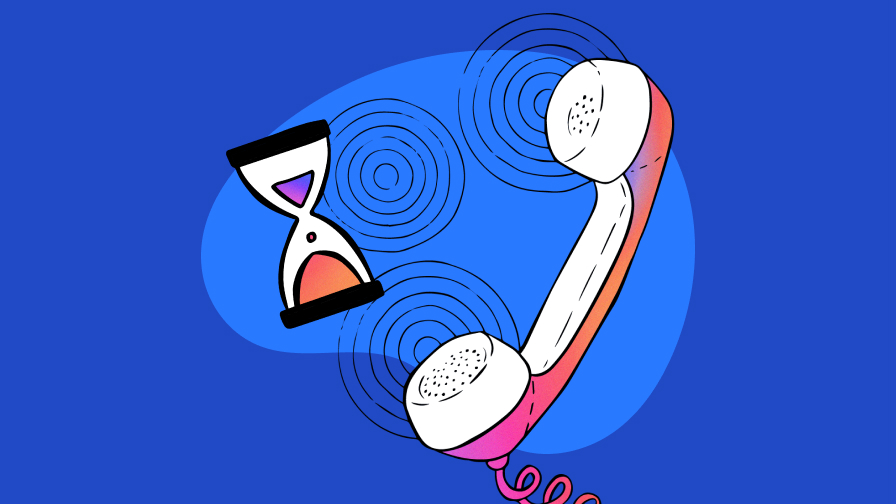INFOGRAPHIC
The future is too important to put on hold: How to reduce customer service calls
Understand the true cost of keeping direct customers waiting (and how AI-powered customer engagement solutions can help)
December 13, 2022 • 3 minutes

In 2022, brands across nearly every industry struggled to deliver customer satisfaction, especially when contacting customer service agents. In fact, 22% of customers say they would rather spend the night in jail than reach out to the customer service team.
It’s really that bad — at least if you stick with the traditional phone calls, emails, and self-service web options.
Browse the infographic for more stats and what you can do to improve the experience.
Please hold: A recipe for customer satisfaction disaster
Being put on hold during support calls can be a painful experience that scares away customers — even usually satisfied ones. When they need help, customers would rather message than pick up the phone. And if they call, some might wait on hold — but not forever:
- 74% prefer messaging to phone calls.
- 82% expect an answer from a customer service agent in under 15 minutes; 62% expect an answer in under 5 minutes.
- 60% of customers hang up after 1 minute on hold.
- 30% of those on customer calls that have to wait longer than a minute will never call back.
The bottom line: Two-thirds of your customers say waiting on hold too long will drive them to your competition.
Meet your not-so-secret weapon in reducing call volume
An AI-powered, asynchronous messaging strategy can give you a competitive advantage in reducing contact center call volume and saving money. Asynchronous messaging is a communication method where customers have the ability to start, pause, and continue the conversation on their own terms. Following are just a few examples of how this approach can reduce incoming calls and improve customer satisfaction:
- Shift from calls to messaging – With IVR deflection, you empower customers with the option to “press 1 to start a messaging conversation” in the apps they love at the exact moment they expect to be put on hold.
- Automate quick answers to common inquiries – An AI chatbot can handle the common questions whenever the customer chooses to converse.
- Focus on the tough stuff – Robust intent data helps dynamically route human customer service agents to the more complex situations, giving customers an efficient, white-glove experience at a fraction of the previous time and expense.
The power of call reduction through Conversational AI and messaging
Eliminating long hold times with multi-channel messaging makes everything better for customer service reps and customers alike. Empower your contact center team to operate more efficiently and experience the following:
- Faster reply times – Agents can handle multiple messaging conversations at once compared to voice-based customer calls, dramatically reducing first reply times from minutes or hours to mere seconds.
- Higher CSAT – Messaging with Conversational AI inspires loyalty and trust, increasing CSAT up to 20% while cutting customer support team attrition in half.
- Deeper cost savings – The right balance of agents and chatbots can increase efficiency and reduce customer care costs by 50%.
- More personalization – AI-powered intent mapping makes conversations feel truly personal – something 86% of customers say they want more of.
- Increased revenue – A deeper connection through messaging can increase lifetime purchasing value, boosting digital sales up to 20%.
It’s time to cure the hold-time headache
Unlock our call reduction strategies guide on 7 ways to reduce calls, lower hold times, and improve satisfaction.


